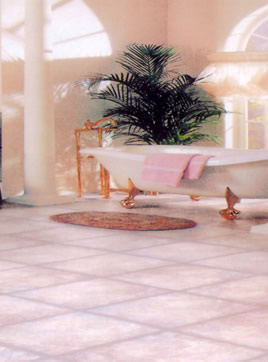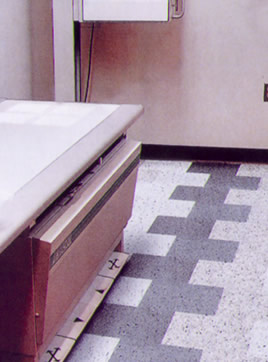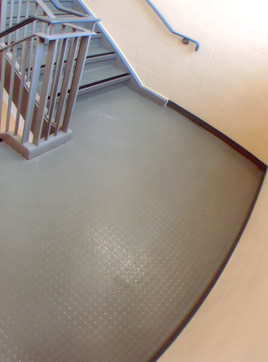


Introduction
Resilient flooring refers to flooring materials which have a relatively firm surface, yet characteristically have “give” and “bounce back” to their original surface profile from the weight of objects that compress its surface. It has long been the most popular hard surface flooring in the United States. Resilient flooring materials are made in various shapes and sizes including both tile and roll form. Common types of resilient flooring include:
- Vinyl Composition Tile (VCT)
- Marmoleum or Sheet Flooring
- Linoleum or Vinyl Sheet Flooring
- Rubber tile and Stair treads
- Cork tile
- Luxury Vinyl Planks (LVP)
Why the Name Resilient?
If you do not already know, resilient is both durable and beautiful. Most resilient flooring is manufactured using natural ingredients. Newer methods of manufacturing and advances in the materials are used for producing resilient flooring provides it with the resilience which was unheard of at the time when it was originally invented. It has an ability to bounce back to its original shape under stress such as dragging of tables and heavy objects being dropped on it.
What Is It Made of?
Nowadays, resilient flooring comes in a wide variety of natural and synthetic materials, fillers and colors. It is either sold in tiles or as sheets. The tiles come in various sizes depending on the manufacturer.
Resilient materials are tested as per standards established by the statutory body American Standard Testing and Materials, ASTM. The quality standards are set very stringently (there was probably no standardization when resilient flooring was first introduced in 1863) and tested in multiple aspects for ensuring that they adhere to recommendations.
Why Is Resilient So Popular?
Although many other types of flooring materials, both man-made and natural are quite popular, perhaps none offers the unique combination of versatility, durability and affordability as resilient. You will find resilient being used everywhere, from the fancy department stores to the local gym. Now, both homebuilders and flooring manufacturers have begun recognizing renewed public interest in this flooring material. Here are some more points to prove that resilient is becoming popular again.
Because of its durability, comfort under foot, aesthetic appeal, long lasting beauty, and cost effectiveness, resilient flooring is used in a wide range of commercial and residential applications. The ease of cleaning and removing spills as well as the overall moisture resistance are important reasons why so many homeowners and commercial building owners select resilient flooring.
In residences, resilient flooring is commonly used in kitchens, bathrooms, entryways, family rooms and increasingly in other areas of a house or apartment where rugs are used in conjunction with resilient flooring. In residences occupied by hypersensitive persons, resilient flooring is commonly used because these floors can be easily cleaned and do not tend to trap dust, which when combined with moisture, can produce microbial contamination.
Commercial resilient flooring has long been the most popular flooring used in schools, health care facilities, and mercantile settings. In schools, resilient flooring offers a cost-effective floor, which is easily and economically maintained and can last for many years before needing replacement. In health care facilities, resilient flooring is commonly used because it is impervious to water, resists stains, and can easily be disinfected, thus providing significant sanitary advantages over other types of flooring surfaces. Because of its durability and the availability of a wide range of colors and designs, resilient flooring has long been a favourite of stores and shops in creating design statements.
Because of its performance attributes and wide variety of colors and designs, resilient floors are frequently used in laboratories, clean rooms, computer rooms, lavatories, super markets, drug stores, lobbies, storage areas, spas, dormitories, libraries and restaurants.